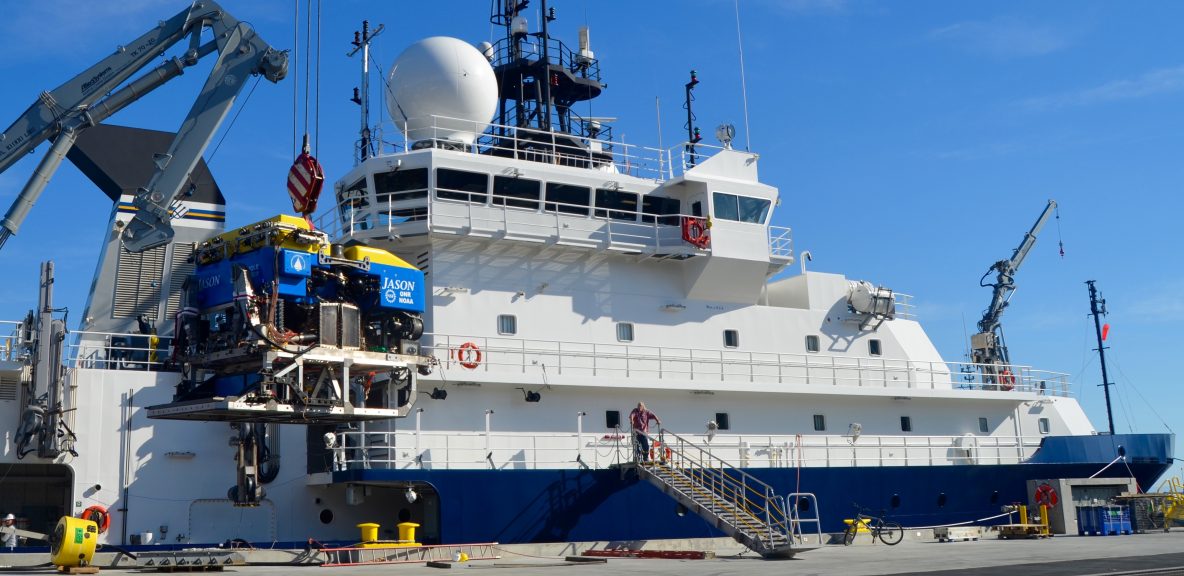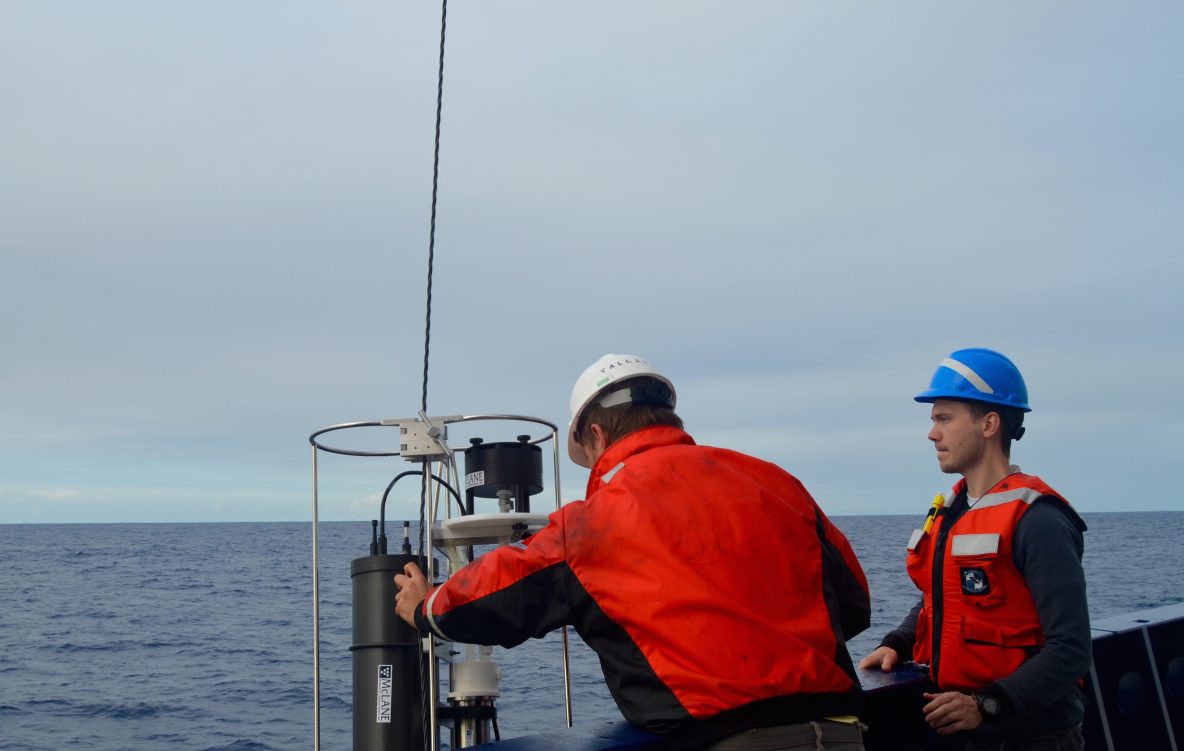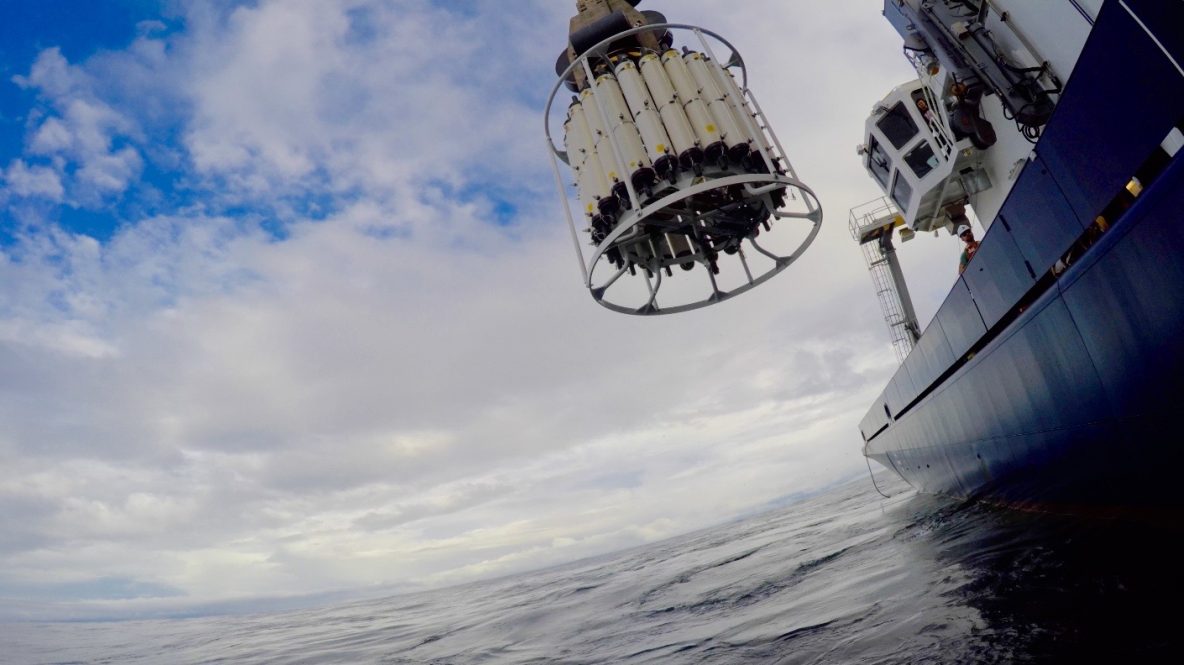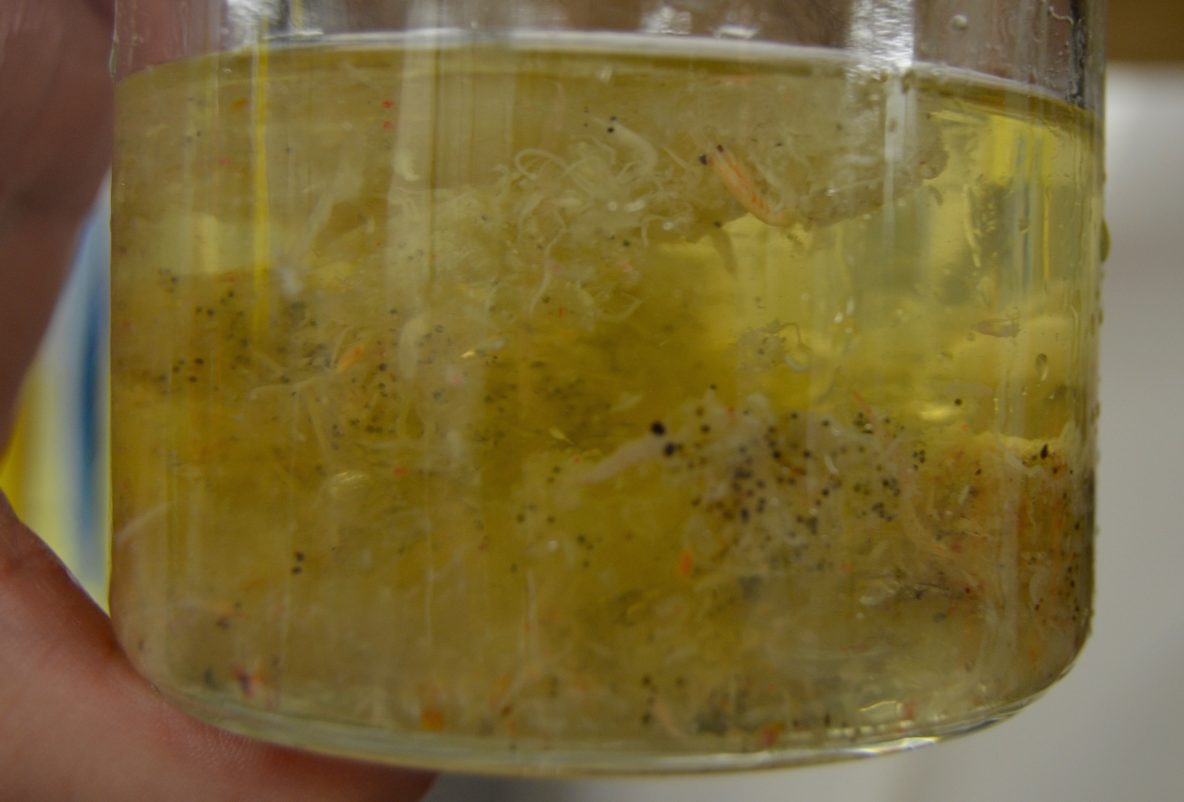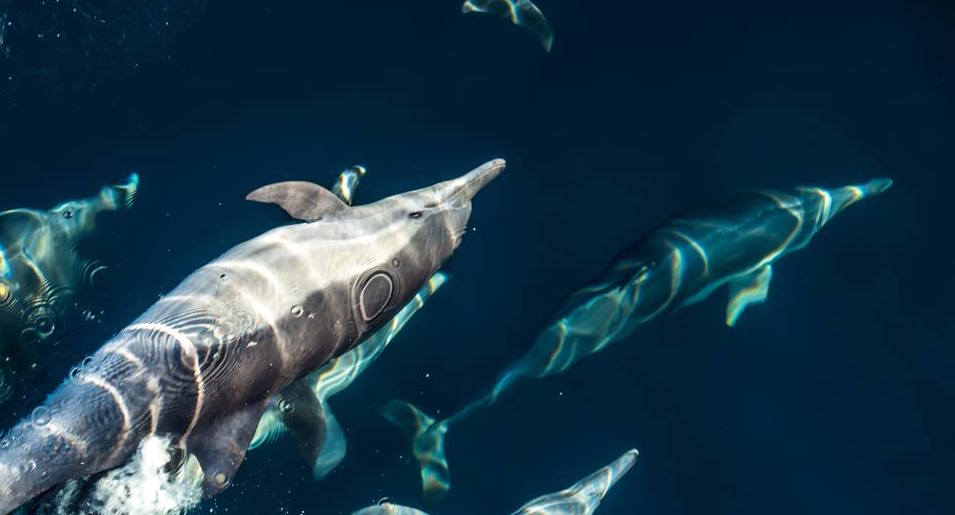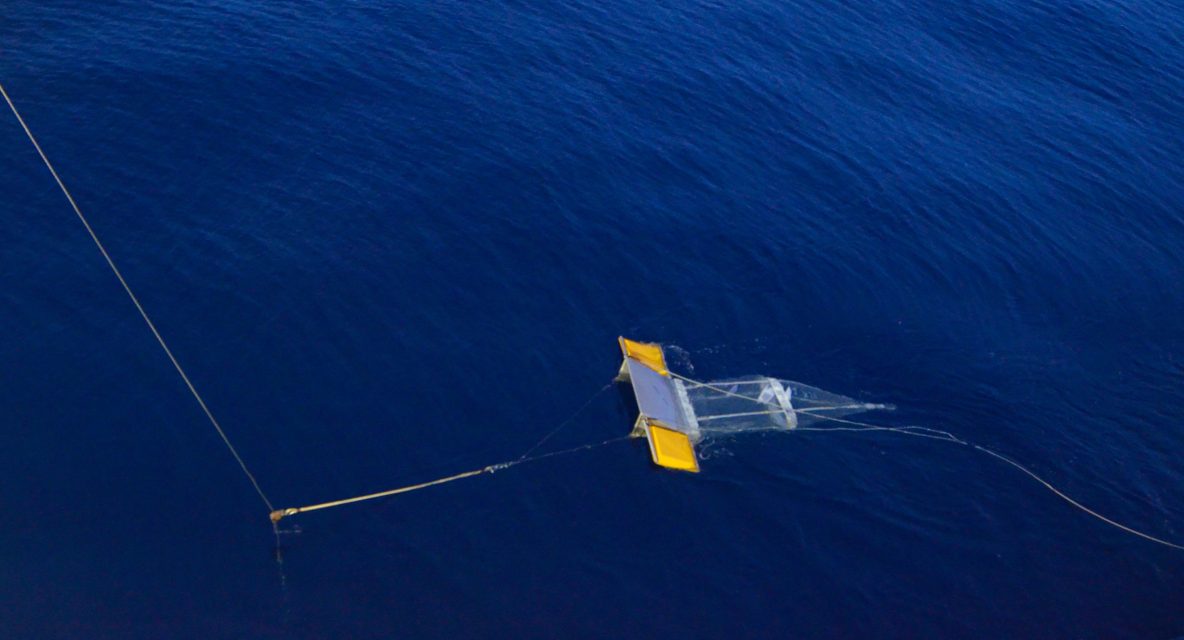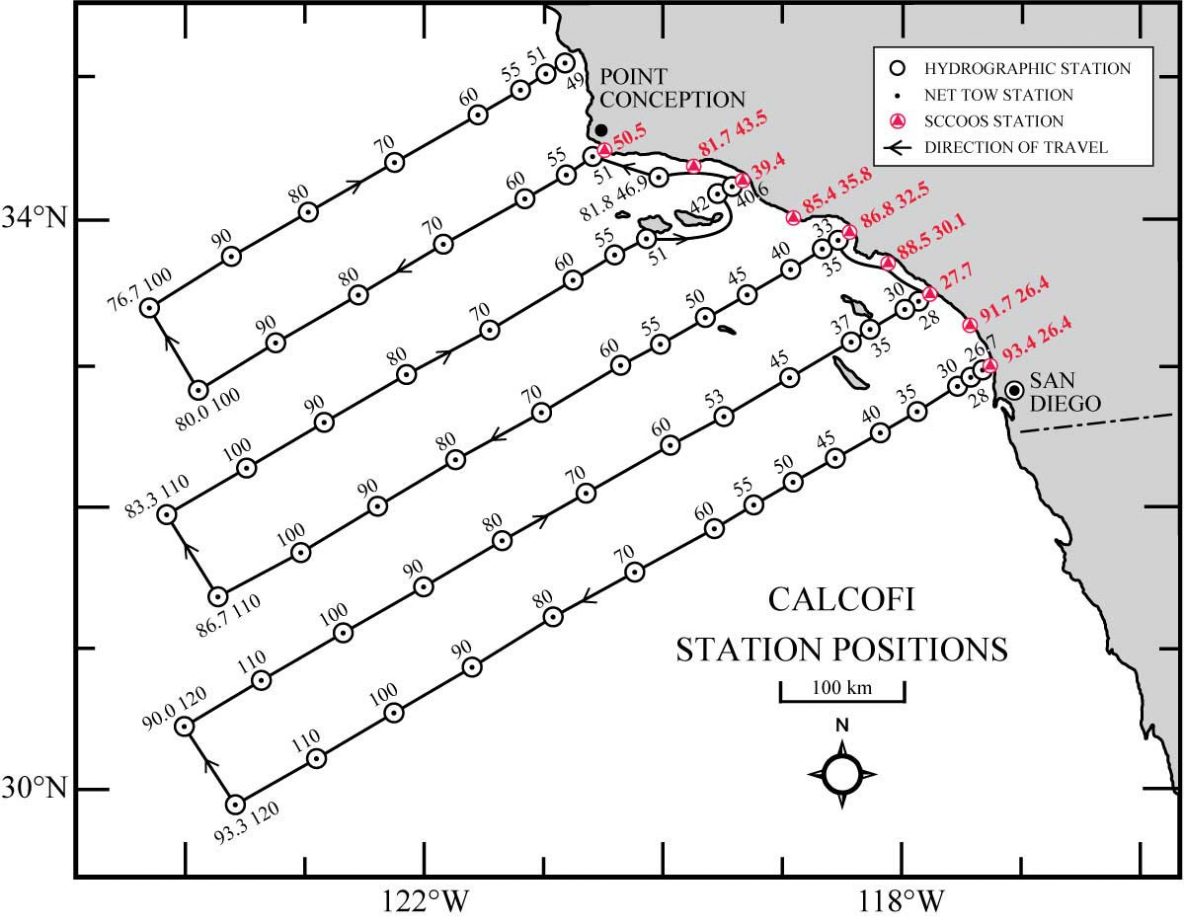The CalCOFI cruise ended on a Tuesday, after successful completion of all 75 science stations. We arrived back at the dock before 9am that morning, and the scientists worked to offload their gear right away – everything was back at the labs in La Jolla by lunch time. Beginning the very next morning at 7am, a new group of scientists … Read More
Cheers to our Volunteers!
Bringing volunteers on a CalCOFI cruise is generally a win-win for everyone. For the scientists, having help deploying and recovering gear, sampling the CTD, and filtering water is key. For the volunteers, it’s a great way to gain experience working in the field. The usual applicants have finished their undergraduate degree in a science field and are sorting out what comes next – career, … Read More
Project of Opportunity: Quantifying Carbon Export
Since the CalCOFI program is well-known and proceeds on a predictable schedule (once per season), there are often scientists who ask for bunk space to come along – but they often have to settle for water samples to be collected on their behalf. R/V Sally Ride, however, has a higher number of science berths than many similarly-sized research vessels so the usual CalCOFI science party had … Read More
Science Focus: Long Term Ecological Research
The Long Term Ecological Research (LTER) Network is a collection of 26 sites throughout the United States and its territories, plus Antarctica and Tahiti. Studies spanning decades provide insight into environmental changes over seasons and years across a variety of habitats. In 2004, the California Current Ecosystem (CCE) site was added to the network, with scientists collecting seawater samples on CalCOFI … Read More
Science Focus: Plankton sensor
R/V Sally Ride has 25 bunks for scientists. The ships that CalCOFI usually sails on have less, only 18 on the retired SIO vessel New Horizon and 15 on NOAA ships Lasker and Shimada. Those extra bunks mean that some side projects can be accommodated. Here on the inaugural CalCOFI on Sally Ride, Dr. Dave Checkley, a professor emeritus and director … Read More
Science Focus: Marine Mammal Observations
What a difference a day makes. The morning after having to move operations inside due to weather, the marine mammal observers aboard R/V Sally Ride were out enjoying the sunshine while 3,000 long-beaked common dolphins surrounded the ship, spread out from horizon to horizon. The chief scientist and ship’s captain had worked together to change the order of stations so that we moved … Read More
Science Focus: Fisheries
NOAA (National Oceanic and Atmospheric Administration) is a partner in the CalCOFI program, sending out four scientists who work in pairs, each for 12 hours per day. After the CTD on each station, nets are deployed. Samples are preserved out at sea and then processed back at the Southwest Fisheries Science Center in La Jolla, near the SIO campus. Fish … Read More
Science Focus: Hydrography
The first operation at each science station during a CalCOFI cruise is a CTD cast. Conductivity (salinity), temperature, depth (pressure), oxygen, nitrate, and chlorophyll sensors are strapped onto an aliminum rosette frame, along with 24 niskin bottles that can be closed via a computer program run from the lab. On stations deeper than 515 meters, the package is sent to that depth and 20 … Read More
Rolling in the trough
The CalCOFI grid lines are famously “in the trough” which means that the ship heading is perpendicular to the swell, and the ship ends up rolling side to side. Roll is different from pitch (the back and forth motion). I keep these straight by picturing the motions in a plane as opposed to a ship. On a plane, everyone knows what … Read More
Let’s Science!
The first official science cruise aboard R/V Sally Ride is underway! Just after 0800 the ship left Point Loma. As we left a fogged-in San Diego bay, the restech Keith gave an overview of the ship to the science party, including safety and drill information, situational awareness, and housekeeping basics. There’s a lot to know about, even if you’ve been onboard … Read More

